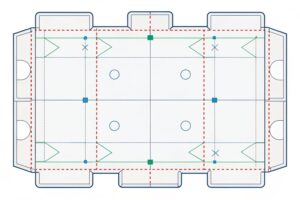How to make promotional ideas effective in supermarkets?
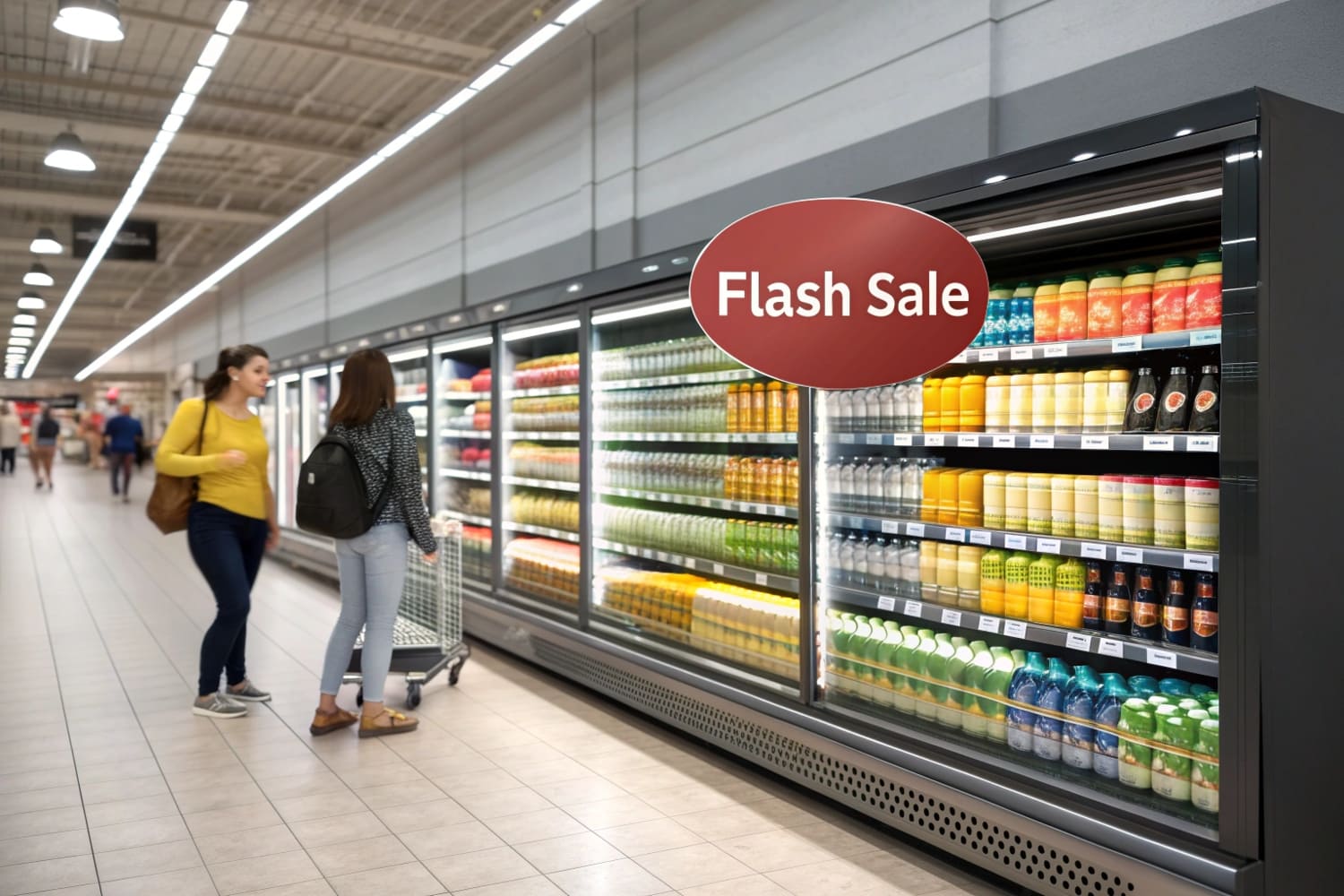
Shoppers walk fast, scan shelves, then decide in seconds—your promotion must stop them, promise value, and push them to act now.
Use clear price cues, bold point-of-sale displays, and timed offers that match shopper needs to turn casual footfall into real sales.
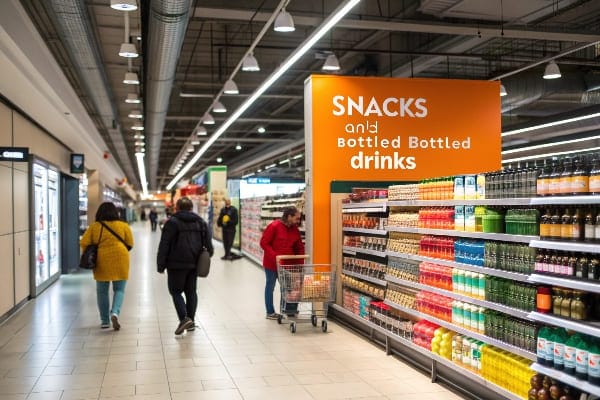
A quick plan keeps readers with me: I will unpack each key question, share lessons from my own cardboard-display projects, and give tools you can copy today.
How do you promote a product in a supermarket?
Every product fights for notice; even strong brands get ignored when the shelf feels crowded.
Place the product at eye level, pair it with a cardboard display that highlights one benefit, and back it with a short-term discount to create urgency.
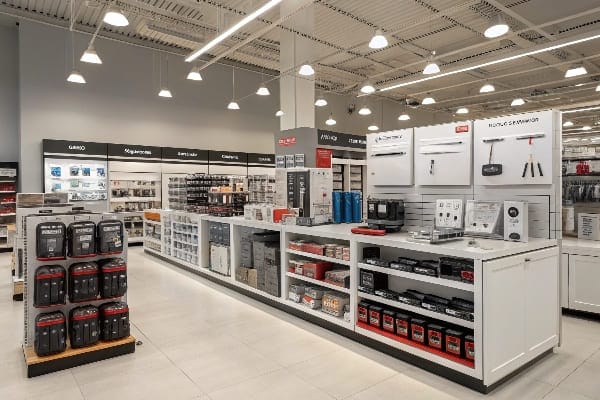
Three steps that lift visibility
First, I ask the store team where shoppers pause. The sweet spots are aisle ends, perimeter power walls, and checkout zones. Next, my design crew shapes a cardboard tower that echoes the product story— for energy drinks we use bold lightning icons; for baby wipes we use soft pastel waves. Last, I lock in a seven-day price cut and show it on a bright header sign. The display, the spot, and the price speak the same simple message: “Grab me now.”
Table: Promotion checklist
| Item | Why it matters | Quick test |
|---|---|---|
| Eye-level placement | Shoppers first scan 4–6 feet high | Does the item sit in that zone? |
| Bold single benefit | Reduces mental load | Can a child say it back? |
| Time-bound discount | Pushes fast decision | Is the end date clear? |
| Stock depth visible | Conveys popularity and trust | Are at least 6 units shown? |
When I follow this flow, sell-through can jump by 30 % in one week. If sales stall, I tweak one element at a time, never all at once, so I learn what actually drives lift. Small, simple tests beat big risky moves.
How do I attract customers to my supermarket?
Aisles full of goods do not guarantee visits; people first need a reason to walk through the door.
Run community-focused events, rotate thematic displays at the entrance, and announce them on local social media to pull new and lapsed shoppers.
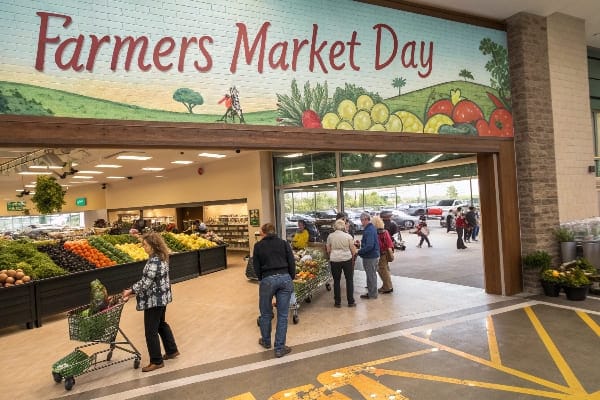
Events + themes + noise = footfall
I start with the calendar. Back-to-school, mid-autumn festival, or NFL playoffs— each season gives a hook. Then my team builds a front-of-store cardboard arch tied to that theme. For a hunting season push in the U.S. we printed camouflage patterns and slotted in Barnett crossbows on rugged racks. The display doubled as a selfie spot. Next, we host a taste test or micro-workshop inside the arch. People post photos; peers get curious; foot traffic1 grows. Finally, I boost a short video on the store’s Facebook page within a one-mile radius. The cost is low, and the call to action is clear: “See the arch, try the gear, save 10 % today only.”
Table: Foot-traffic levers
| Lever | Action example | Expected result |
|---|---|---|
| Seasonal theme | Camouflage arch during hunting season | Aligns with shopper mood |
| Live demo | Crossbow safety demo every hour | Extends dwell time |
| Social teaser | 15-second video ad | Drives store visit INTENT |
| Limited coupon | QR code redeemable in store only | Converts intent to visit |
When each lever lines up, the store feels alive. People spend longer, basket size rises, and they leave with stories that bring friends next week.
What are the 4 P’s of a supermarket?
Marketing theory often feels abstract, yet supermarkets live or die by these four fundamentals.
Product, Price, Place, and Promotion guide every aisle plan: choose the right goods, set competitive prices, position them well, and push them with clear messages.
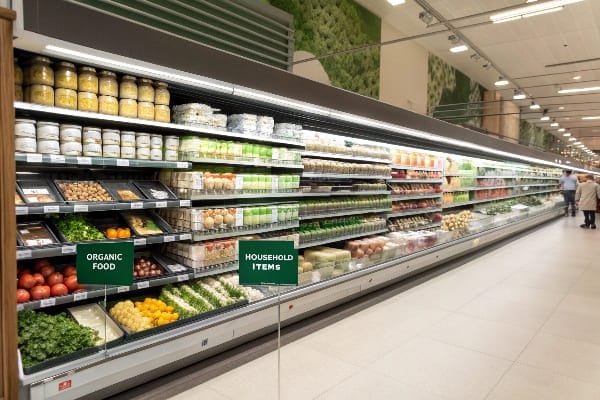
Putting theory on the shelf
Product. I vet items on freshness, margin, and differentiation. For example, a private-label granola2 with unique local honey beats a me-too brand.\
Price. I use a good-better-best ladder. Entry items draw price shoppers, premium lines draw margin. Key is transparency; no hidden fees or tricky pack sizes.\
Place. Shelf maps matter. I cluster complements: cereal beside milk coolers, snacks near sodas. Cardboard side-kicks hold trial sizes, letting shoppers test without risk.\
Promotion. I schedule three rhythms: daily staples, weekly features, and monthly mega events. Each tier has its own color tag so shoppers learn the pattern.
Table: 4P alignment test3
| P | Check question | My quick fix if “No” |
|---|---|---|
| Product | Does it solve a real need today? | Replace with a faster-moving SKU |
| Price | Does the shelf tag match market norm? | Roll back or add bundle value |
| Place | Can shoppers locate it in 5 seconds? | Add shelf talker or move eye level |
| Promotion | Is the offer visible from 10 feet away? | Increase font size or use color block |
Keeping the 4 P’s honest stops waste. I review the table with my floor manager every Monday. It takes ten minutes and saves thousands in dead stock each quarter.
What is the marketing strategy of a supermarket?
A strategy is not a list of tactics; it is the simple idea that links vision to daily tasks.
Focus on shopper missions, use data to curate assortments, and create in-store theater that delivers value quickly and repeatedly.

Mission thinking moves the needle
I split shoppers into three missions: “Tonight’s dinner,” “Restock basics,” and “Explore deals.” Each mission has its own path. Dinner seekers head to produce and protein; I set a meal-bundle display with a QR code leading to a five-minute recipe video. Basics shoppers want speed; I keep staples on power aisles with wide lanes and bold signage. Deal hunters crave surprise; I build a treasure-hunt endcap4 that flips themes every Friday at noon.
Data fuels the plan. Point-of-sale reports show peak times for each mission. For example, dinner missions5 spike at 5 p.m. on weekdays. I schedule fresh bread baking at 4:30 p.m.; the smell acts as a silent ad.
Finally, I stage small bits of theater. A butcher trimming steaks in sight builds trust. A live juice press by the entrance signals freshness. My cardboard displays play supporting roles: they guide flow, tell story, and hold impulse buys. Popdisplay’s quick-swap header cards let staff refresh artwork in minutes, so the theater never looks stale.
Table: Mission-based blueprint
| Mission | Hot zone | Display type | Key metric |
|---|---|---|---|
| Tonight’s dinner | Perimeter rear | Meal-bundle island | Average basket $ |
| Restock basics | Center aisles | Wide shelf with clear tags | Time in store |
| Explore deals | Aisle ends | Treasure-hunt endcap | Units per transaction |
When each mission runs well, the strategy shows in numbers: higher traffic, faster turns, and more repeat orders. I measure monthly and adjust—strategy lives, it is never done.
Conclusion
Effective supermarket promotion is simple: match shopper missions with bold displays, fair prices, and fresh experiences, then refine through small weekly tests until sales sing.
Explore this resource to discover proven strategies that can significantly boost foot traffic and enhance customer engagement in your store. ↩
Explore the advantages of private-label granola, including unique ingredients and better margins, to enhance your product strategy. ↩
Discover the 4P alignment test’s role in marketing strategy to ensure product success and minimize waste. ↩
Learn about the treasure-hunt endcap concept and how it can create excitement and drive sales in your store. ↩
Explore this link to discover innovative strategies that can enhance your dinner mission approach and boost sales. ↩



